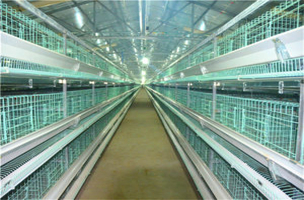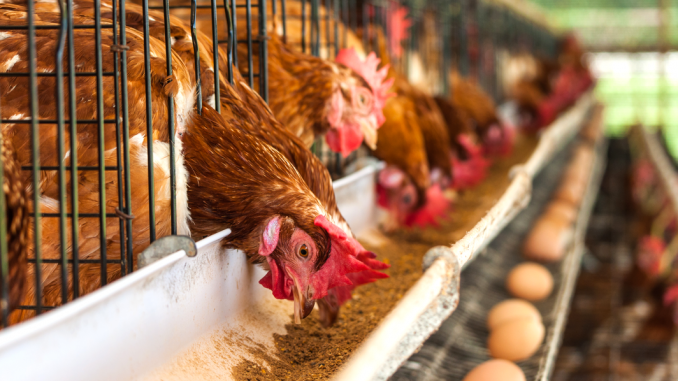How can we disinfect broiler farms?
- Published in Chicken cages
Disinfection is the physical or chemical method of destroying pathogens that remain on different vectors, thereby cutting off the route of transmission and preventing and controlling the occurrence of infection. Disinfection can prevent the spread of pathogens and infectious diseases. Especially important for broilers raised in chicken cages.
The battery cage for broilers farm disinfection is divided into two types: chicken disinfection and empty house disinfection. The effective disinfection determines the success or failure of the culture. Disinfection is the basic link in the whole feeding process. The following is a specific disinfection method:
Disinfection with chicken is a certain concentration of disinfectant liquid sprayed on chicken houses and poultry farming equipmen. It is an effective way to prevent and cure various chicken diseases. It can not only kill the virus, but also reduce the dust in the chicken house. It purifies the air to prevent the infection and spread of respiratory diseases. At the same time, it can adjust the temperature inside the house. In the summer, the temperature in the house can be adjusted. The chickens can be disinfected frequently, and the chicken manure can be prevented from producing carbon oxide, carbon dioxide and ammonia. And other harmful gases. In addition to the primary disease chicken, the pathogen mainly comes from the chicken inhalation and the introduction of people, cars and objects into the chicken house and then spread to the chickens. In order to control the occurrence of chicken disease in time, it is an important means to do a good job of air disinfection. Disinfection method with chicken: Broiler feeding is basically completed at the end of brooding. When the ventilation is gradually increased, the chicken is disinfected in the chicken house. Generally, the chicken house is 2-3 days after the second week of age. With a backpack sprayer, the spray head will be sprayed upwards, and the inner and the outer step will gradually step back spray. Once every three weeks, it can be used once a day. When entering the five-week age, it is twice a day in the morning and evening. The closed chicken house can be used after the big mouth bottle is added. Place it at the air inlet, and as the air enters the house, the disinfectant enters to achieve the effect of air disinfection. Disinfecting with chicken is generally a non-irritating, non-corrosive disinfectant. The commonly used disinfectant is a disinfectant containing iodine. The pure iodine solution is preferred.

After the broiler is out of the bar, rinse it first, then use 0.5% peracetic acid or a disinfectant containing chlorine to spray the solution as required. Spray it from top to bottom. Close the door and window immediately after spraying. Open the door and window to remove the padding after one day. The aim is to eliminate bacteria and viruses on the air and litter surfaces in the house. Disinfection should be thoroughly cleaned from top to bottom and from left to right. There is no weed, no garbage and no pollutants in the farm. It is necessary to move all the chicken equipment to the outside and wash it with water and then soak it with disinfectant. disinfection. The key to the thorough disinfection of the house is the one-time washing and disinfection. The disinfection must be added to the flushing. The flushing water must use tap water or well water. It cannot be considered as flushing without any drugs or using unclean water to wash the house. Not only does this not kill the bacteria and viruses in the house, but it also allows them to penetrate deep into the ground and cracks in the house.

